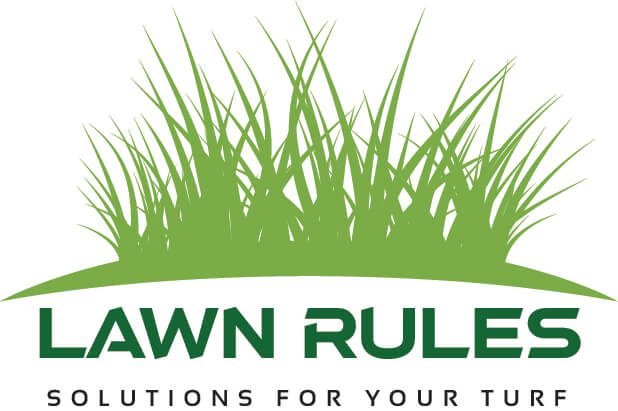Best weed killer for Buffalo Lawns?
That is a great question.
The best prevention for weeds is a healthy soil and dense cover of healthy Buffalo grass.
Weeds in Buffalo Lawns can often be an indication of other underlying issues compromising turf grass growth and development. Issues may include environmental stresses—such as shade, drought, or heat—or stresses caused by improper management—including inappropriate mowing, fertilization, or irrigation.
When considering the best weed killer for buffalo lawns, it is essential to develop a comprehensive weed management program that optimizes chemical control and reduces the risk of future weeds. Before selecting an herbicide product, consider the following:
1. Preventative Control: Take steps to prevent the introduction of new weeds into your Buffalo lawn via seeds or vegetative structures. For example, lateral stems such as rhizomes or stolons can root into the soil and establish new plants like Kikuyu or common couch. Use reliable sources and take care when introducing topsoil, or compost across your lawn. These materials have the potential for contamination. Keep mowers, string trimmers, and similar equipment clean and free of debris to avoid transporting weeds along with the equipment. When weeds are producing seed heads and flowers, bag and remove clippings to prevent weed dispersal.
2. Mechanical Control: Regular mowing and physical removal of weeds by hand-pulling or with hand tools can help reduce weed pressure. Particularly when weeds are more mature, manual removal may be more effective than the use of post emergence herbicides.
3. Cultural Control: Good cultural control involves adopting practices that support healthy, dense turf grass, which is the best defense against weeds in your Buffalo lawn. Proper mowing, irrigation, and fertilization practices are vital in supporting healthy turf grass growth and reducing overall weed pressure.
Herbicide Selection for the Best Weed killer for Buffalo lawns : Where to Start?
There are several steps required to determine an optimal herbicide to control weeds in a Buffalo lawn.
1. Proper Weed Identification: It is critical to accurately identify the target weeds in the lawn as well as the type of Buffalo species you have as certain herbicides are safe on certain species of buffalo. For weed identification, most broadleaf weeds are controlled by Lawn Rules herbicides. Grass weeds can be a little more difficult especially poa annua, Ryegrass and sedges. Summer grass weeds are best controlled before they appear or germinate via a preemergent herbicide called Spartan. This preemergent herbicide will stop broadleaf and grass weeds from popping up in your Buffalo lawn for up to 6 months.
2. Determining whether a pre emergence or post emergence product is most appropriate. Pre-emergence and post-emergence herbicides are applied at different points in the target weed’s life cycle. Before purchasing a product, it is essential to know which type of product to select relative to the application timing. Buffalo grass is considered a warm season grass and is more susceptible to weed invasion during the winter months, so it is important to spray Spartan preemergent herbicide before the weeds germinate in winter. I recommend spraying Spartan in March or April, this will give you protection against weed invasion during the months the Buffalo grass stops growing. A post emergent broadleaf herbicide is recommended in Spring to clean out any competition and allow the Buffalo grass to grow without competition from weeds. An application of Bow & Arrow at half rates and repeat 14-21 days later is a very safe option if you’re not aware of the Buffalo species you have in your lawn. Other post emergent herbicide options are herbicides containing MCPA and Bromoxynil or contact me via www.lawnrules.com.au
Start by identifying your primary target weeds. It is particularly important to know how the target weeds are classified relative to their life cycle. Do not feel overwhelmed. Focus on identifying general trends in the types of weeds present. Questions to consider include: Are there mostly broadleaf weeds or grassy weeds? Are the weeds mostly annuals or perennials? Having a general idea of what you are dealing with will help you select the most effective product for your unique situation.
Weed Life Cycles
Annual Weeds germinate from seed each year and live for one growing season. Summer annuals will typically germinate in the spring or early summer and die back in the Autumn & Winter. Winter annuals will normally germinate in the Autumn or early winter, dying back in the late spring or early summer.
Biennial Weeds typically complete their life cycle over the course of two growing seasons. In the first year, seeds will germinate and produce a rosette. In the second year, they will develop a stalk and begin to flower.
Perennial Weeds may go dormant over the winter and return each year, persisting across multiple seasons. Herbicide application timing will vary by species, as different perennials will be more or less active at different points in the year. Proper identification will help to determine when herbicides should be applied to be the most effective. These weeds are often more challenging to control, hence the importance of applying a preemergent herbicide every year to prevent Perennial weeds persisting in your Buffalo lawn.
Recommendations for the best Weed killer for Buffalo lawns
Broadleaf weed control with a post emergent herbicide, apply Bow & Arrow @ half label rates and repeat 14-21 days later.
Grass weeds like poa annua and other cool season grasses apply Brek herbicide at the label rates and wash into the soil as this herbicide is root absorbed and most effective during cooler and moist conditions. Brek is safe on all Buffalo species, but it is recommended to do a small test plot first. Grass weed can take 6-8 weeks to discolour and die.
Following these Lawn Rules recommendations will ensure you the best weed killer for buffalo lawns available and the healthiest Buffalo lawn in your street.
